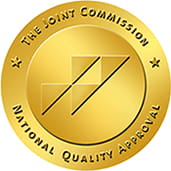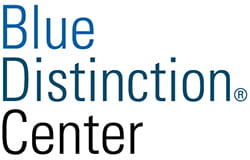Quality & Patient Safety
Overview
At Main Line Health, we have made it our mission to provide patients with a superior patient experience. This translates to the consistent delivery of safe, high quality clinical care in the absence of preventable harm. In other words, did you heal me, not hurt me, and did you treat me with kindness and respect?
As one of the Philadelphia region's most comprehensive health care institutions, our team of more than 10,000 physicians, nurses, administrators, staff, and volunteers are dedicated to leading the way in quality and patient safety. Our commitment to quality is measured in both better patient outcomes and increased patient satisfaction. These measures are based on analytical data that track detailed medical outcomes, as well as individual patient surveys that assess overall patient satisfaction and experiences in the health care setting.
We want our patients to know that we take seriously the importance of monitoring and measuring our safety and quality performance track record. In the Main Line Health System Quality Scorecard, we share our scores — based on national averages and our own goals — in the areas of: infection prevention, clinical performance, and patient satisfaction.
The path to quality and patient satisfaction is a continuous pursuit. From our Board of Directors to senior leadership to every member of the Main Line Health team, we are constantly monitoring our progress, and instituting new, improved methods and protocols to heal patients, deliver compassionate care, and prevent harm.
We are committed to excellence, and to delivering a superior patient experience for every patient, every day, in every way.
Please consider making a donation to advance these efforts.
Creating a Reliable Culture of Safety
At Main Line Health, patient safety leads our list of core values. It is deeply embedded in our culture, and reflected in everything we say and do.
To ensure that patient safety remains top of mind for every member of our health care team every day, we have created a workplace that promotes a reliable culture of safety, where shared behaviors, practices, and processes support a safe and risk-free environment for patients, family and staff. We continually evaluate our systems — and our resulting safety record — and introduce best practices and process improvements on an ongoing basis.
Every member of our team — more than 10,000 clinical and non-clinical personnel — has received extensive patient safety training , and our leaders demonstrate their passion for safety by strongly promoting quality and safety programs on each of the Main Line Health campuses.
Safety in action
As a patient at a Main Line Health facility, you can be confident that our top priority is your safety, health and wellbeing. We constantly seek new and better ways to provide the highest possible quality care to each of our patients. Below are just a few of the safety and quality programs and processes that we have implemented in recent months to help us deliver on this commitment.
100 percent flu vaccination compliance
Beginning in 2011, Main Line Health instituted a mandatory Flu Vaccination Policy for all physicians, employees, and contracting parties working at our facilities. In fact, receiving an annual flu shot is considered a condition of employment. We believe it is our responsibility to keep our patients safe from preventable infections, and by reducing the possibility of flu infections, we put our beliefs into action.
Improving processes for patient care safety
At the cornerstone of creating a safe environment for our patients is the ability to adhere to repeatable practices and processes that have safe, proven outcomes. Main Line Health uses process improvement tools such as Six Sigma and Lean methodologies to identify the best practices for specific procedures and processes that can be measured with specific targets and outcomes. An example of system-wide process improvement efforts includes the implementation of specific care delivery "bundles" that define actions to be taken by the clinical team – "Every time, for Every patient." Bundles have been implemented for a number of care processes, such as: Ventilator care to reduce the risk of Ventilator Assisted Pneumonia (VAP); Standard precautions to reduce the number of Blood Stream Infections (BSI), implementation of Nurse Driven Foley Catheter removal protocols to effectively manage the risk of urinary tract infections as a result of extended catheter insertion; and a pressure ulcer bundle to reduce the number of hospital acquired pressure sores.
Process improvement and the implementation of commonly managed care bundles are just some of the ways in which Main Line Health seeks to create a safe and caring environment for patients. By reducing known potentials for risks, as well as closing the potential for gaps on handoffs and communication among staff, Main Line Health is building a reliable culture of safety for our patients and staff.
Controlling device-related infections
When a "foreign device" is introduced to a patient — whether it is a central line to deliver medicine intravenously, a urinary catheter, or a ventilator that allows a patient to breathe — there is an inherent risk of infection. To protect patients from preventable harm, Main Line Health has established numerous systems and protocols proven to significantly reduce the risk of device-related infections. Our state-of-the-art electronic monitoring system prompts rounding physicians to evaluate — on a daily basis — the need for the continued use of any device. And our ongoing training and awareness programs keep patient safety top of mind for every member of our health care team.
Controlling surgical site infections
While Main Line Health practices numerous internal protocols to prevent surgical site infections, we have also engaged our patients in their own pre-surgery preparedness. This includes:
- advance blood work to test for — and work together to adjust — elevated glucose levels that can increase a patient’s risk for infection;
- a nasal swab test to identify, and treat, any pre-existing staph infections; and
- the use of an antibiotic wash by the patient for three days leading up to a procedure, particularly with joint replacement surgery.
Working collaboratively with our patients, we can help ensure they are as healthy as possible prior to undergoing surgery — better protecting them from preventable harm.
Technology that promotes safety
Main Line Health is a leader in bringing automation and technology resources to the point of care for physicians, nurses, and other care providers. Technology solutions improve safety by reducing errors in communication, improving access to patient information across care settings, streamlining access to results, and providing a "double check" to reduce human error in the complex health care setting. Examples of these technological advances include:
- utilization of Computerized Physician Order Entry, resulting in the automation of manual processes related to patient orders; with the goal of, improving order accuracy and communications among departments as well as reducing risk of duplicate orders
- system-wide use of Medication Administration Checking software solutions that reduce the risk of medication errors
- access to imaging solutions that deliver radiology studies to the point of diagnosis and treatment
- installation of technology to print bar code labels at the bedside for specimen labeling, reducing the risk of mislabeled specimens and improving access to patient information
Culture of safety initiative and our great catch awards
At Main Line Health, we celebrate staff members who promote safety and reduce risks at the individual level. More than 200 of our employees have been recognized over the past two years as Great Catch safety award winners. Whether avoiding an error, noticing an environmental issue, clarifying a miscommunication, or other such safety concern, these individuals took action to improve safety in their workplace. All of our Great Catch winners are excellent ambassadors and examples of how a reliable culture of safety engages every single person across the health system.
Understanding Quality
The term "quality" can be defined in any number of ways. For a health care professional, quality may mean, "did we insert that line into the bloodstream using a sterile technique" or, "can we administer the right tests to rapidly confirm a diagnosis of pneumonia and begin antibiotic treatment immediately." For a patient, it might mean "did the staff respond to my call bell quickly" or, "did my doctor take the time to explain my procedure and answer my questions." All of these aspects translate to quality and patient safety, and all are vital in ensuring a superior patient experience.
At Main Line Health, we hold ourselves to the highest standards of quality care, and we want our record to be transparent to our patients and to the community. We know that as an informed patient, you will make better decisions about the health care providers you choose, and participate more effectively in your own care and treatment.
Hospital Compare
Hospital Compare provides patient satisfaction reports based on the Hospital Consumer Assessment of Health care Providers and Systems Survey—a national survey sent to a random sampling of recently discharged patients. This survey process was designed to collect and publically report feedback based directly on the patient's perspective of hospital care.
Pennsylvania Health Care Quality Alliance
Pennsylvania Health Care Quality Alliance was developed by an alliance of health care providers and insurers. PHCQA's mission is to improve the quality of patient health by:
- Developing a consistent statewide approach to hospitals by enabling consumers to compare hospital performance;
- Allowing health care professionals to evaluate and improve the quality of the patient care; and
- Helping insurers to evaluate the performance of their provider networks.
Hospital & Healthsystem Association of Pennsylvania (HAP)
Main Line Health is especially proud to be an active member of the Hospital & Healthsystem Association of Pennsylvania (HAP). Having secured a grant from the Partnership for Patients — a national, public-private partnership aimed at improving the quality, safety, and affordability of health care for all Americans — HAP is a premier collaborator in this groundbreaking initiative.
To learn more about how the Partnership for Patients is significantly improving health care across the commonwealth, we encourage you to access HAP's quality and patient safety report, Pennsylvania Hospital Quality: Achieving More Together.

Joint Commission - The Gold Standard
Main Line Health hospitals are fully accredited by the Joint Commission. The Joint Commission is an independent, nonprofit organization whose accreditation and certification process is recognized nationwide as a symbol of quality that reflects an organization’s commitment to meeting certain performance standards.

Blue Distinction Award for Quality
Main Line Health hospitals have earned the Blue Distinction Award from the Blue Cross and Blue Shield Association for demonstrating expertise in delivering quality care in the following specialties: Spine Surgery, Knee and Hip Replacement, and Cardiac Care.
Blue Distinction Centers (BDC) met overall quality measures, developed with input from the medical community. A Local Blue Plan may require additional criteria for providers located in its own service area; for details, contact your Local Blue Plan. Blue Distinction Centers+ (BDC+) also met cost measures that address consumers’ need for affordable healthcare. Each provider’s cost of care is evaluated using data from its Local Blue Plan. Providers in CA, ID, NY, PA, and WA may lie in two Local Blue Plans’ areas, resulting in two evaluations for cost of care; and their own Local Blue Plans decide whether one or both cost of care evaluation(s) must meet BDC+ national criteria. National criteria for BDC and BDC+ are displayed on bcbs.com. Individual outcomes may vary. For details on a provider's in-network status or your own policy's insurance coverage, contact your local Local Blue Plan and ask your provider before making an appointment. Neither Blue Cross and Blue Shield Association nor any Blue Plans are responsible for non-covered charges or other losses or damages resulting from Blue Distinction or other provider finder information or care received from Blue Distinction or other providers.